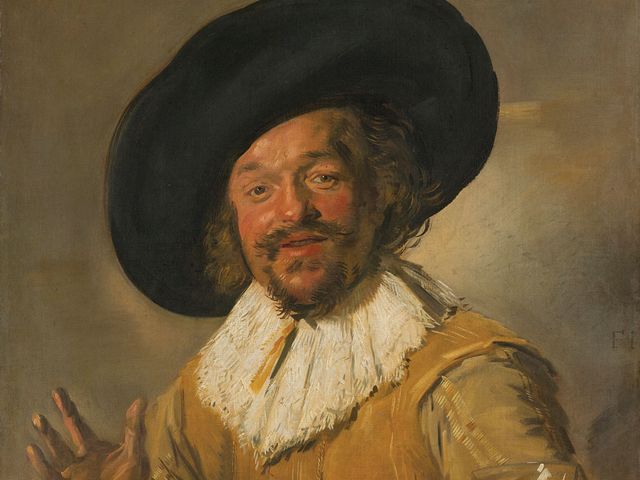Frans Hals was one of Van Gogh’s favourite Dutch artists, but he never had the opportunity to see an exhibition of the 17th century master. Instead, he made pilgrimages to museums in Amsterdam, Haarlem, Antwerp and Paris to see individual paintings by the bold portraitist. Van Gogh particularly admired Hals’s quick way of working, with bravura brushwork, an approach which he tried to adopt when he became an artist.
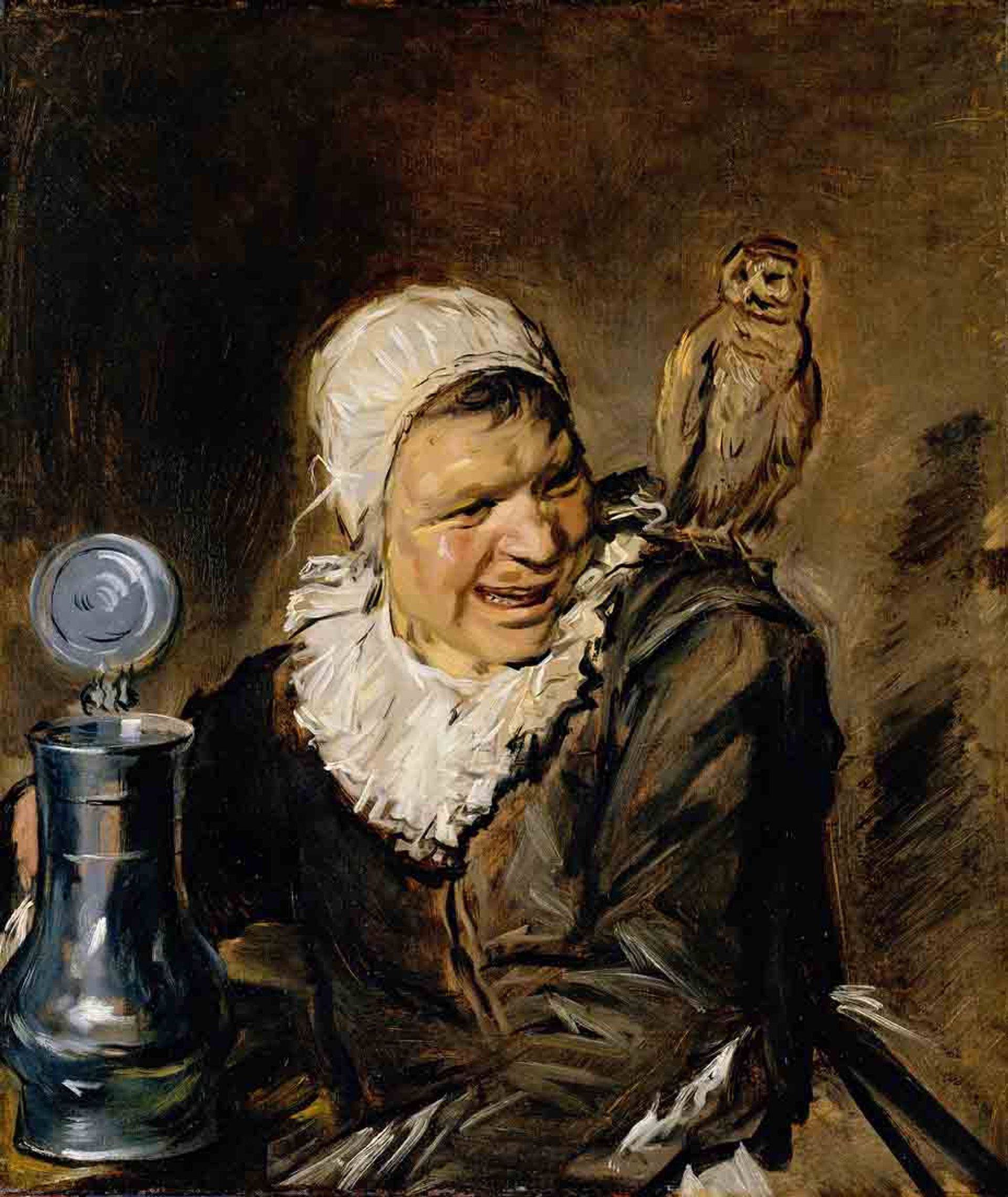
Frans Hals’s Malle Babbe (around 1640)
Credit: Staatliche Museen zu Berlin, Gemäldegalerie
Londoners will now have more luck, with the opening of Frans Hals at the National Gallery (30 September-21 January 2024). Fifty pictures by Hals will be on show, assembled with loans from around the world. These include eight paintings singled out for special praise in Van Gogh’s letters.
In 1877, as a young man living in Amsterdam, Van Gogh visited the Frans Hals Museum in the artist’s hometown of Haarlem, with its exceptional collection of his work. There he was impressed by the group portraits, including the Regents of the Old Men’s Alms House (around 1664, Frans Hals Museum, Haarlem).
In total contrast to the formal group portrait, Van Gogh later fell for Malle Babbe (Foolish Barbar, around 1640), which is much more the Hals that we appreciate today. He enjoyed the way that the artist had captured the features of the leering, drunken woman with a pitcher of beer in one hand and a wise owl on her shoulder. The painting was in Berlin, so when writing about it to his brother Theo in 1883 Vincent must have known it from a black-and-white reproduction.
But it was a few months later, after his move to Nuenen (a village in the south of the Netherlands), that Hals became a key figure in Vincent’s artistic firmament. In October 1885 he wrote to Theo, “longing most of all for Rembrandt and Frans Hals, one day this week I’m going to the museum in Amsterdam”—referring to the newly reopened Rijksmuseum.
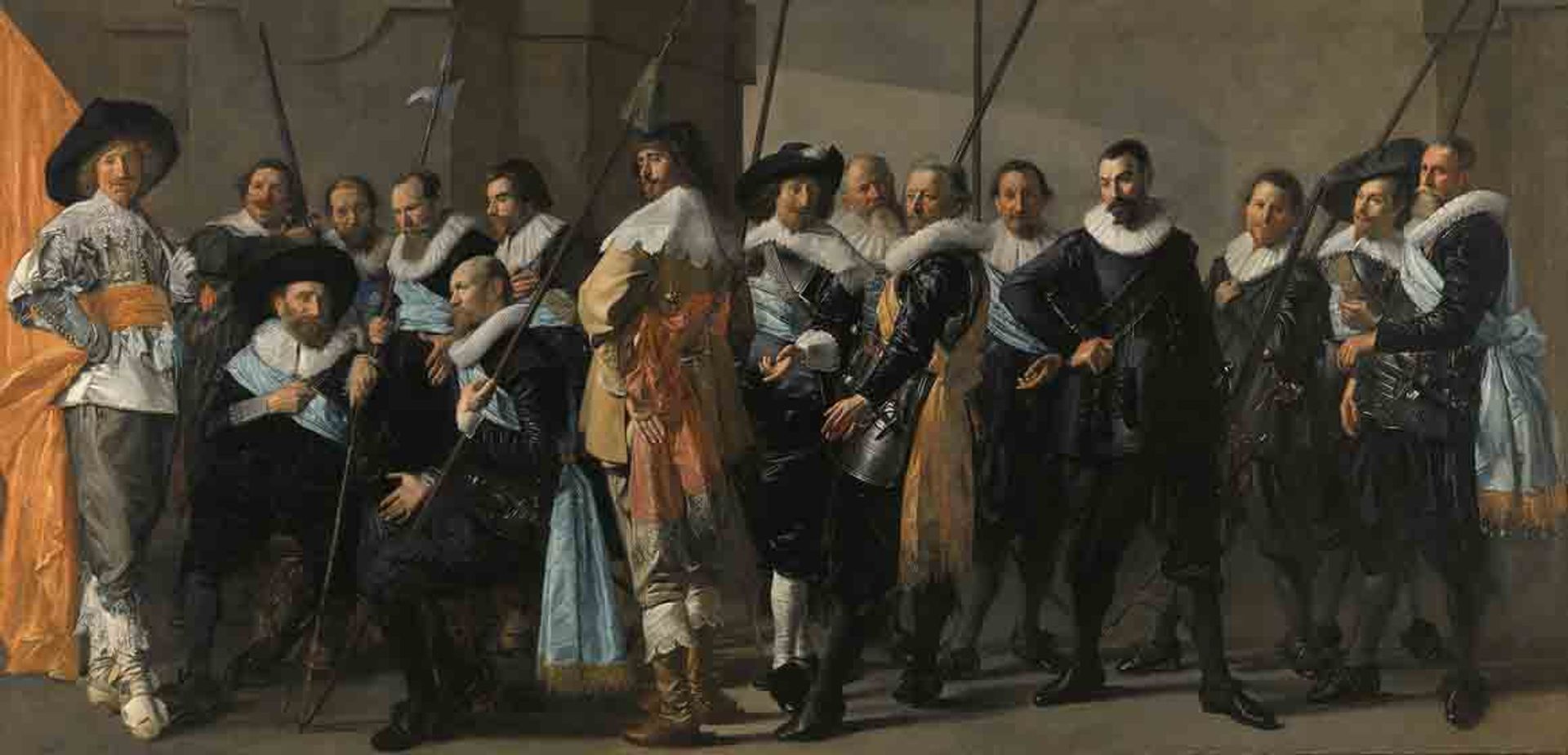
Frans Hals's Militia Company of District XI under the Command of Captain Reynier Reael, known as The Meagre Company (1633, with the right side completed by Pieter Codde in 1637) Credit: Rijksmuseum, Amsterdam (on loan from City of Amsterdam)
On his return Vincent waxed lyrical about The Meagre Company (1633), a huge and powerful group portrait of a militia group: “That painting alone makes the trip to Amsterdam well worth while”.
This may seem a surprising choice, when one thinks of Van Gogh’s own paintings of the time, but he singled out for praise the figure of the standard-bearer, Nicolaes van Bambeeck, on the left side. What particularly caught his eye was the way Hals had composed the standard-bearer’s clothing with a range of shades of grey. Vincent wrote to his brother: “I’ve seldom seen a more divinely beautiful figure—it’s something marvellous…I stood there literally rooted to the spot.”
It is particularly telling that Van Gogh’s commented on this ambitious Hals group portrait saying that it was “painted quickly”, a rough technique which he himself was keen to adopt. Vincent advised his brother: “Paint in one go, as far as possible in one go. What a joy it is to see a Frans Hals like that—how very different it is from the paintings—there are so many of them—where everything has been carefully smoothed out.”
On seeing the Rijksmuseum works by Hals, Van Gogh went on to describe the hands depicted in the master's portraits, “hands that lived, but were not finished”. Looking at the hands in Van Gogh’s own portraits, they can appear to be crudely painted. But perhaps the artist was emulating his mentor Hals, who painted them loosely, both to give a feeling of movement and to put greater emphasis on the slightly more finished face.
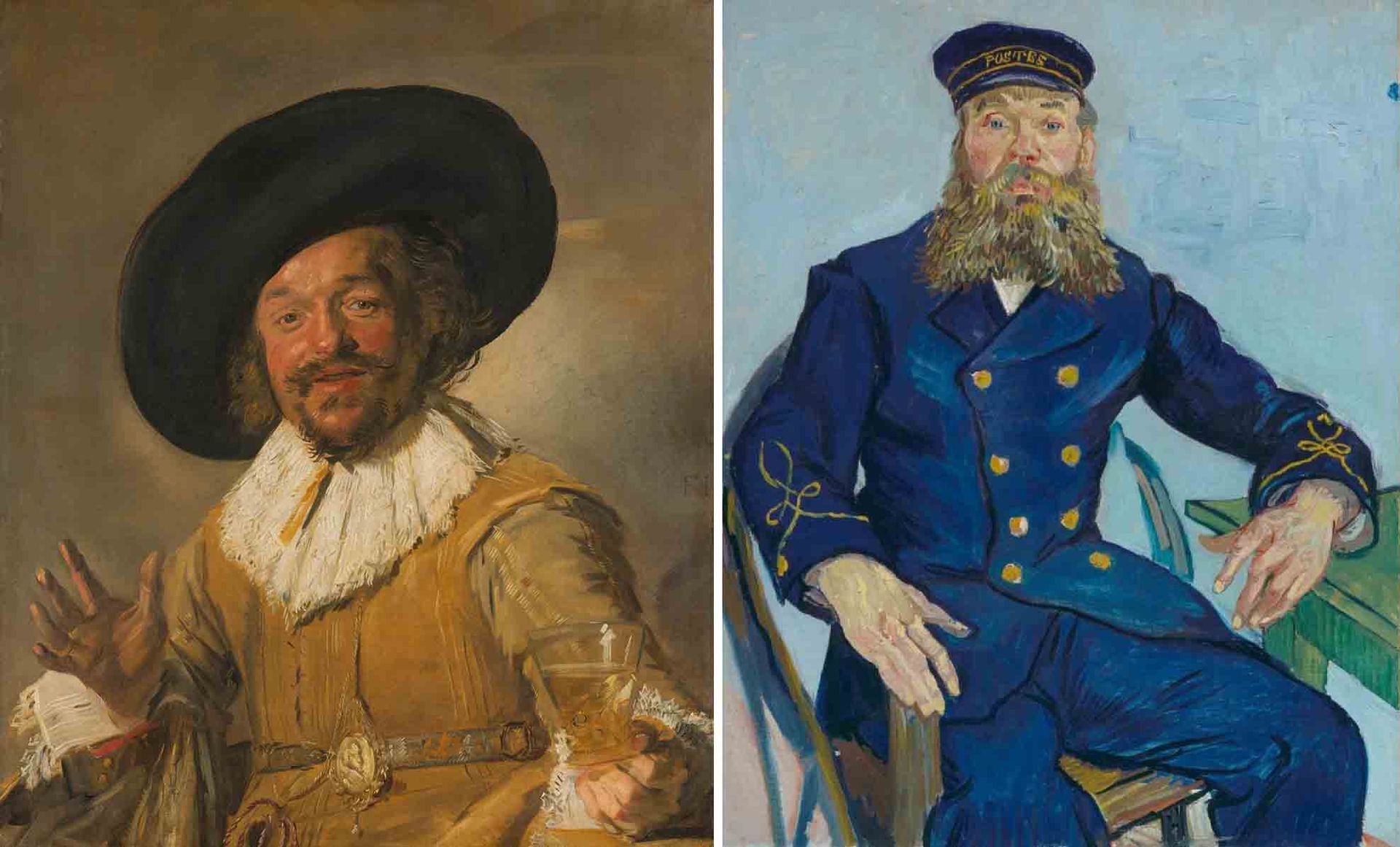
Both artists painted hands very loosely: Frans Hals’s A Militiaman holding a Berkemeyer, known as The Merry Drinker (about 1629) and Van Gogh’s Postman Joseph Roulin (August 1888) Credit: Rijksmuseum, Amsterdam and Museum of Fine Arts, Boston
Vincent went on to discuss another Hals at the Rijksmuseum: The Merry Drinker (about 1629). He particularly noted the use of yellow, wondering what pigment was used: “Frans Hals’s yellow—call it what you will, dull lemon or fawn yellow—what’s it done with?” Yellow would soon become Van Gogh’s favourite colour, culminating in his famed Sunflowers (August 1888) against a yellow background.
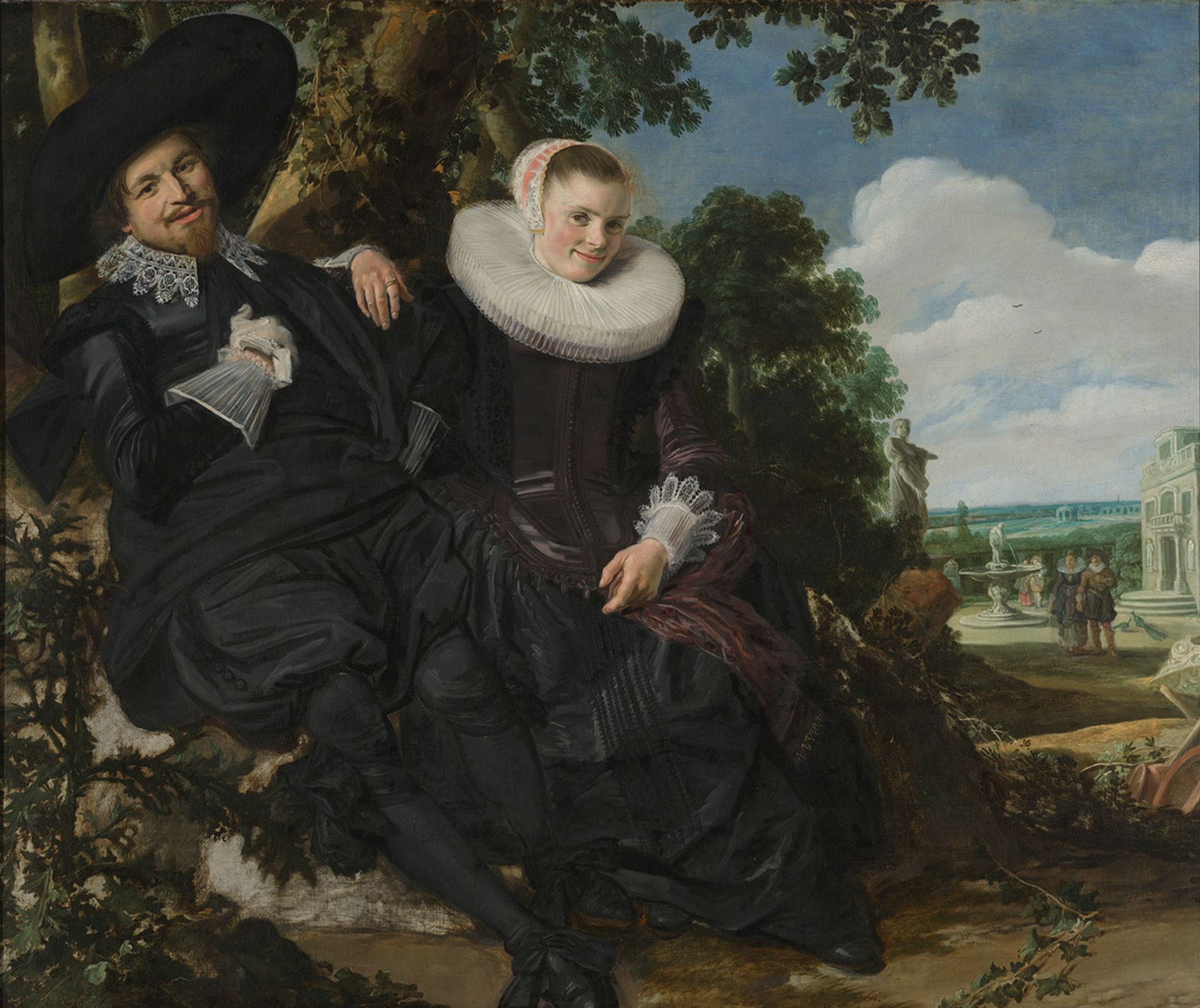
Frans Hals’s Portrait of a Couple, probably Isaac Abrahamsz Massa and Beatrix van der Laen (about 1622) Credit: Rijksmuseum, Amsterdam
Commenting on the Rijksmuseum’s Portrait of a Couple (about 1622), Van Gogh noted how Hals cleverly used colour: “The darker the garb the lighter the face… in his portrait and that of his wife in the garden. Anyway—Frans Hals is a colourist among the colourists.” (In the 19th century this double portrait was assumed to be of the artist and his wife, but it is now believed to be of Isaac Abrahamsz Massa and Beatrix van der Laen.) Van Gogh later noted that the young couple looked as if they had been painted "after their first wedding night”.
On moving to Antwerp in November 1885 Van Gogh had the opportunity to discover the important collection of the Museum of Fine Arts. There he was particularly struck by The Fisherboy (1638).
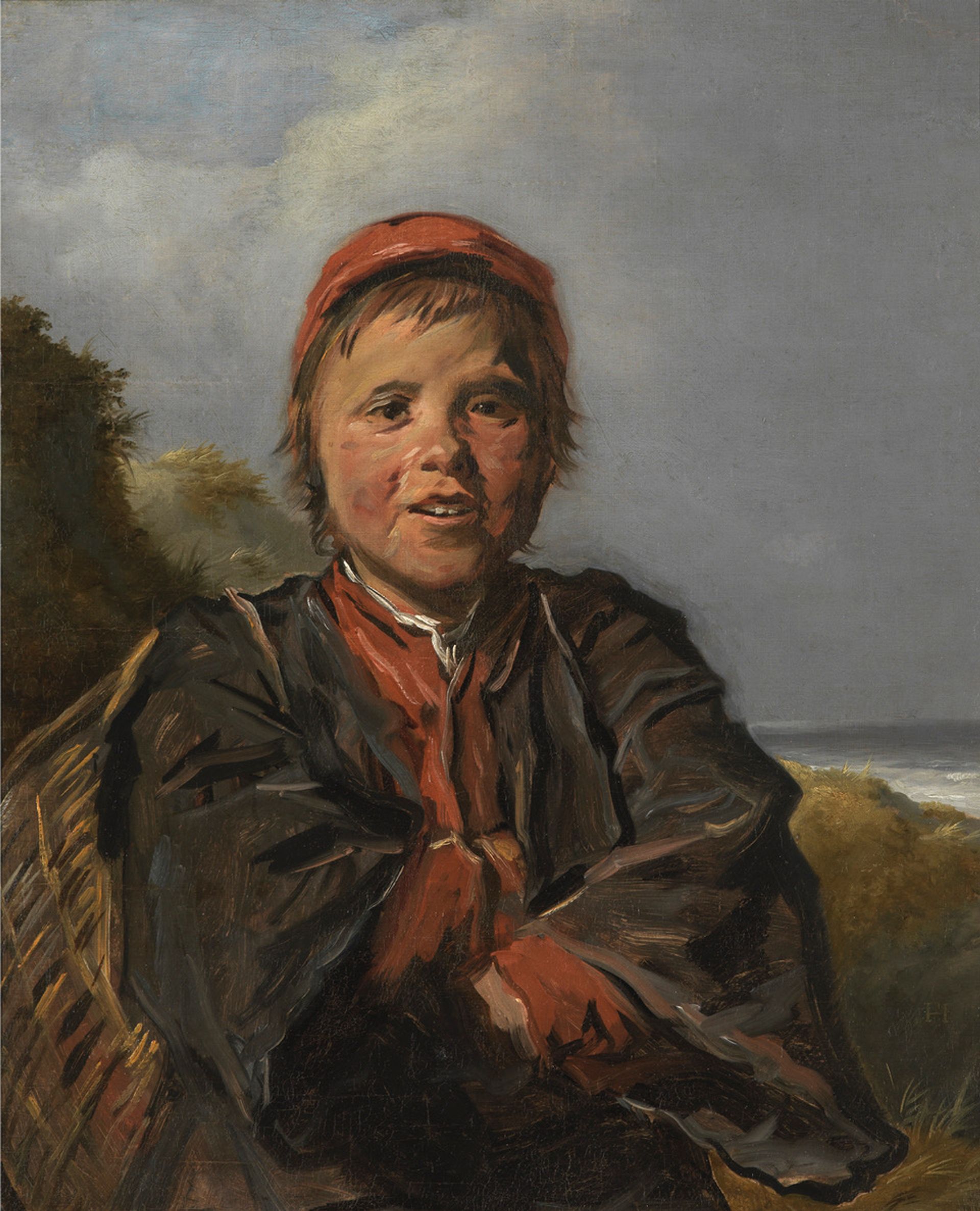
Frans Hals's The Fisherboy (1638) Credit: Museum of Fine Arts, Antwerp
Anton Kerssemakers, a friend who accompanied Van Gogh to the museum, later recalled the encounter with The Fisherboy, which is brilliantly painted with swift brushwork: ”Suddenly he’s gone from my side, and I see him walking up to the painting… When I came up to him he was standing with hands folded as if in prayer in front of the painting and whispered: ‘God d[damned]… now that’s painting, look’ and following the direction of the broad strokes with his thumb: ‘he leaves it just as he puts it down.’”
In Antwerp Van Gogh patronised the bars and dance halls around the port, which were much frequented by sailors. On one occasion he described a woman who ran an inn as having “an ugly and irregular face, but with vivacity and piquancy à la Frans Hals”. He added that “she danced excellently in an old-fashioned manner… once with a well-to-do little farmer type who had a large green umbrella under his arm, even while he was waltzing amazingly fast”.
Antwerp characters continually reminded Vincent of those portrayed by Hals. As he wrote to Theo: “My thoughts are full of Rembrandt and Hals at the moment, not because I see many paintings by them but because I see so many types among the people here who remind me of that age.”
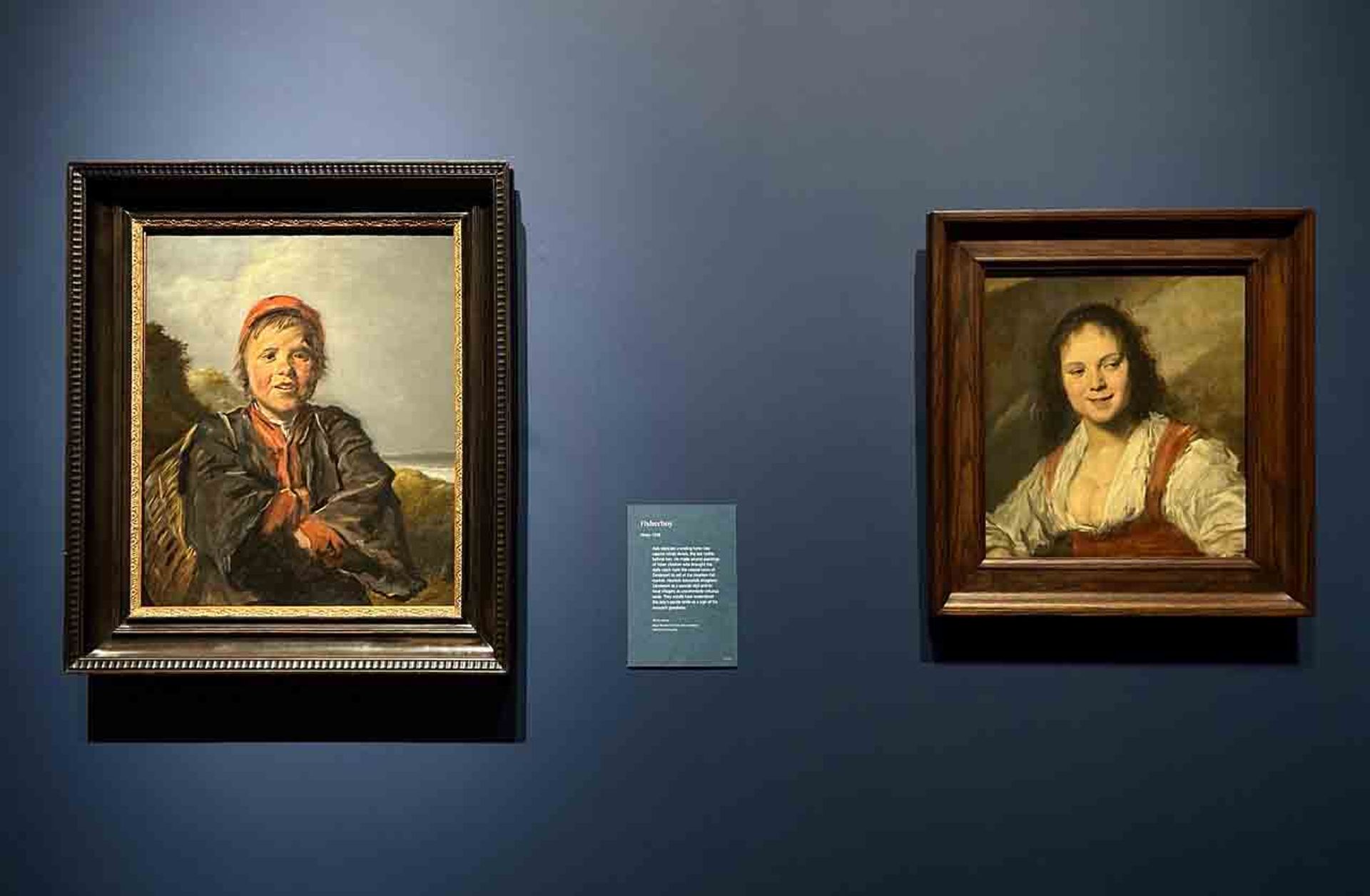
Frans Hals’s The Fisherboy (1638) and Young Woman (La Bohémienne) (around 1632) in Frans Hals, National Gallery, London
Credit: Museum of Fine Arts, Antwerp and Musée du Louvre, Paris (photo: The Art Newspaper)
On leaving Antwerp, Vincent moved to Paris in February 1886 to stay with Theo. As a regular visitor to the Louvre, he praised Young Woman (La Bohémienne)(around 1632), which he described as depicting a “beautiful gypsy whore”. The National Gallery does not shy away from her profession, suggesting in the caption that “this striking painting may have originally been intended for a brothel, where clients could sometimes choose from portraits of the women working there.”
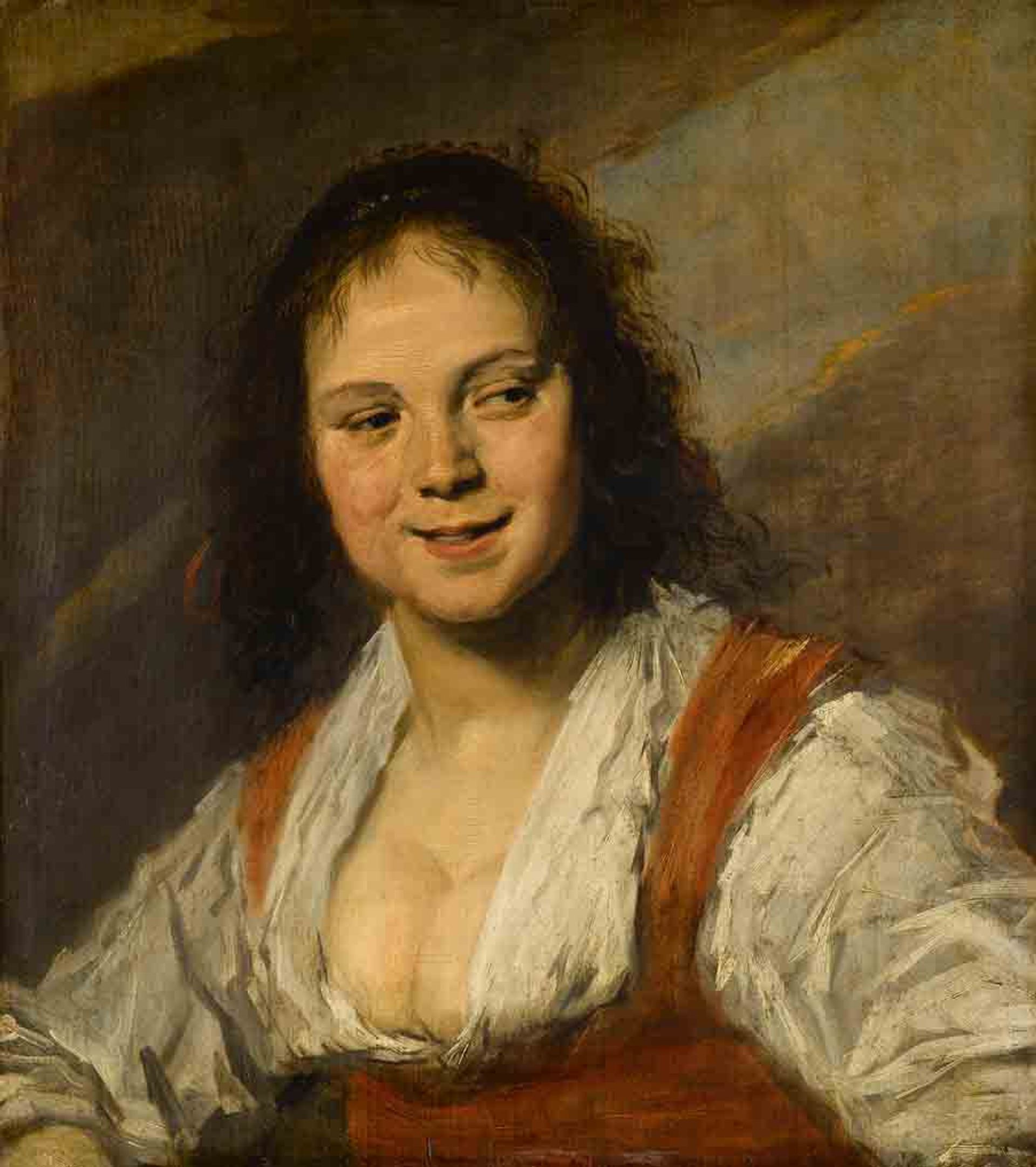
Frans Hals’s Young Woman (La Bohémienne) (around 1632) Credit: Musée du Louvre, Paris
Even after his departure for Provence, Van Gogh still fondly remembered Hals as one of the greatest portraitists. He recalled works which he described as depicting: soldiers; gatherings of officers; magistrates; matrons with pink or yellow skin, wearing white bonnets, dressed in wool and black satin; good citizens with their families; the tipsy drinker; the old fishwife full of a witch’s mirth; the beautiful gypsy whore; babies in swaddling-clothes; the gallant, bon vivant gentleman, moustachioed, booted and spurred; himself and his wife; guttersnipes and laughing urchins; musicians; and a fat cook. For Van Gogh, all human life was there in the paintings of Hals.
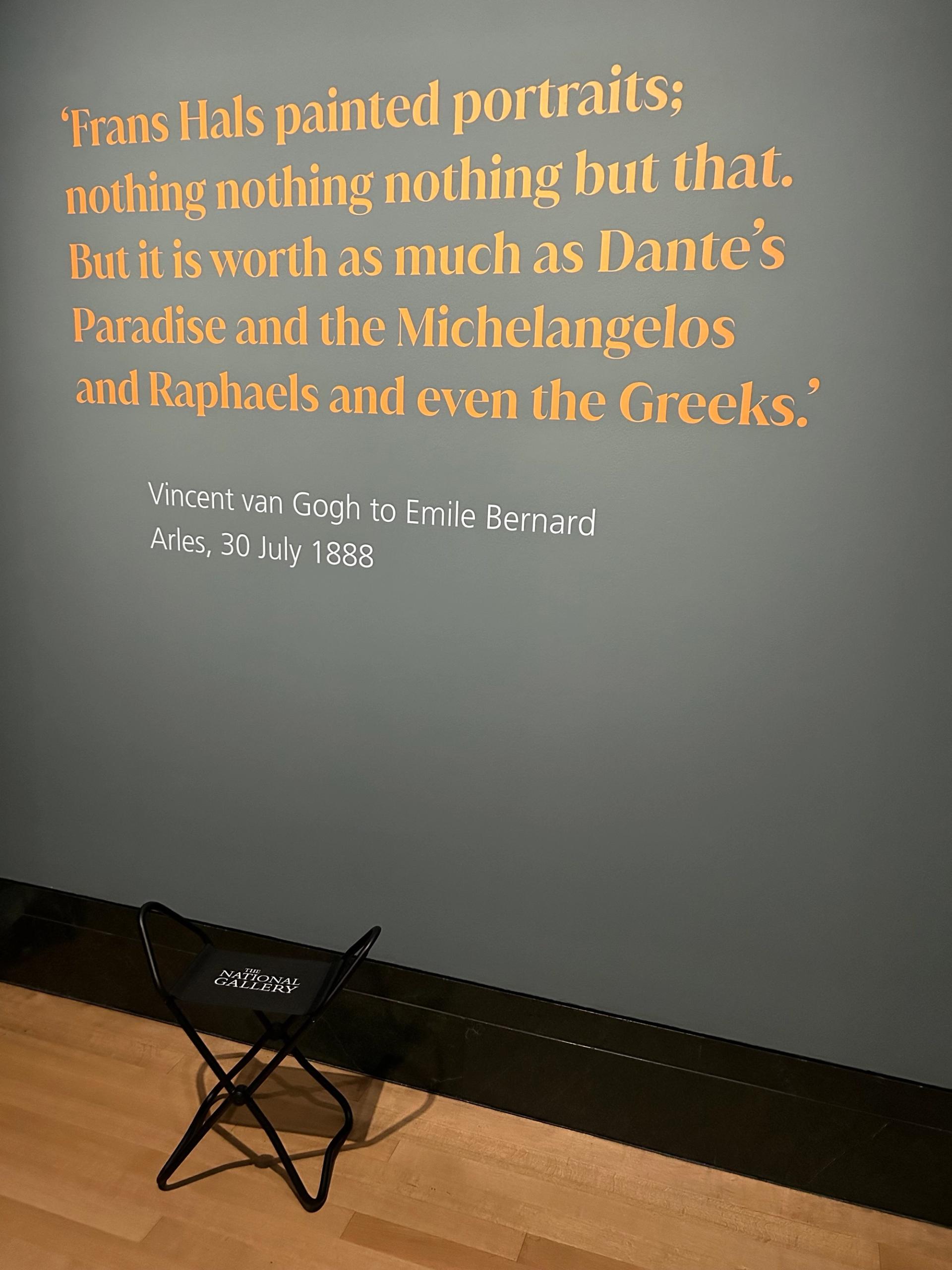
Entrance wall text in Frans Hals, National Gallery, London Credit: The Art Newspaper
• For those who miss the London exhibition, Frans Hals will also be presented at the Rijksmuseum in Amsterdam (16 February–9 June 2024) and the Gemäldegalerie in Berlin (12 July–3 November 2024).



